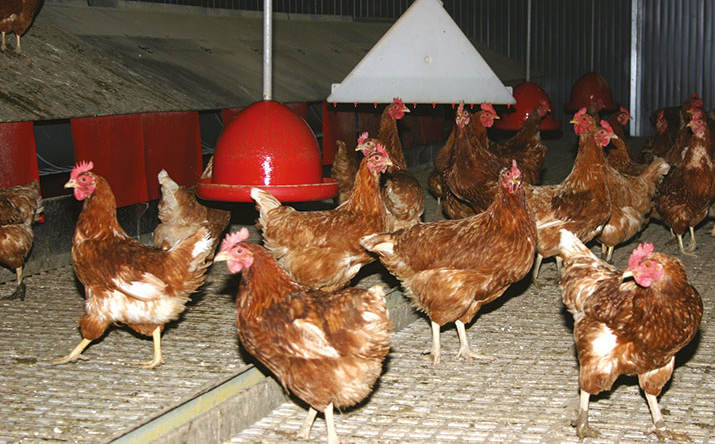
Government inspectors have warned that they will be checking egg production units for overstocking, following a claim that some producers may have been encouraged to take on more birds than they are allowed.
The Animal Health and Veterinary Laboratories Agency (AHVLA) has contacted the British Free Range Egg Producers' Association (BFREPA), asking it to warn its members to stick to permitted stocking rates or face enforcement action.
The warning has been issued by Tony Potter, technical services manager for egg marketing with AHVLA, in a note sent to BFREPA policy director Robert Gooch. In the note he said there had been a report that some pullet rearers had allegedly been encouraging producers to take on extra birds despite the stocking limits.
"I felt it important to bring to your attention a new rumour circulating (particularly, it seems, in the free range world)," he said in the note. "A producer has reported that he and others are being encouraged to take on more birds by their rearers (or suppliers of replacement birds), when they re-populate their flocks. I am aware of the industry reports of increased numbers of hens being reared and of rearers seeking part payment in advance of delivery etc – this suggestive of an oversupply situation which may add some credibility to this rumour."
Tony Potter, who also sent a copy of the note to Mark Williams, chief executive of the British Egg Industry Council (BEIC), said, "I should, therefore, be grateful if, through your connections to your respective memberships, (and through your auditors) that you make clear what the legal stocking densities/rates are. There has been a tremendous effort by all producers to comply with both the cage ban and the stocking density requirements which came in on 1 January 12. It would be a great shame to move away from this position of compliance."
It was on January 1 this year that the rules on internal stocking density changed for longstanding producers. A European Union directive was introduced on August 3 1999 reducing the stocking rate for free range egg producers from 11.7 hens per square metre to nine hens per square metre. New producers were required to stock at the new density immediately, but the EU allowed a derogation to give existing producers time to switch over to the updated regulations. They were allowed to continue stocking at 11.7 hens per square metre. That derogation came to an end in December 2011.
The EU limits external stocking density to 2,500 birds per hectare. Until last year the limit in the United Kingdom was set at 1,000 birds per hectare under the Lion code. In 2011 the limit was increased to 2,000 birds per hectare. The figure was subsequently agreed by the RSPCA.
In his note to BFREPA, Tony Potter said that inspectors had been alerted about the report of overstocking and they would enforce the relevant welfare provisions. "Enforcement actions may range from providing advice and guidance to resolve the matter, through improvement notices to criminal prosecution or the disallowance of part/all of the single farm payment," he said.
He has asked BFREPA to ensure that its members were aware of the rules and warn them that inspectors would be checking on compliance by free range producers.
The Ranger contacted the Pullet Rearers' Association about the reports that some rearers may have been encouraging producers to take on extra birds. Association chairman Chris Brenton said he was not aware of any such instances, but he said the association fully supported the AHVLA's position that all producers should comply with stocking densities.
"Ultimately the responsibility for the number of birds housed in a shed must rest with the producer," he said. "If there has been any encouragement taking place, then a producer should just say 'no'. I am certainly not aware of any."
Chris said that a letter would be going out to members of his association to bring their attention to the issue and to make them aware that the AHVLA would be checking bird numbers.
